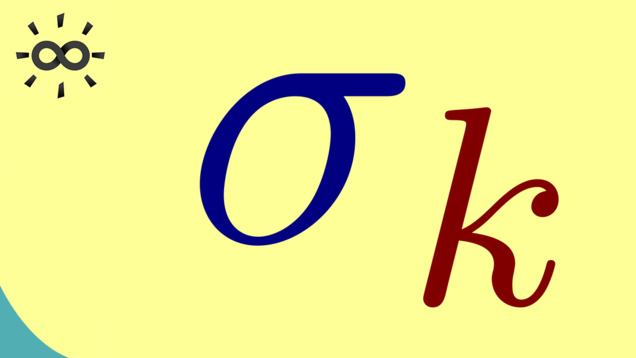
-
Title: Pauli matrices
-
Series: Advent of Mathematical Symbols
-
YouTube-Title: Pauli matrices
-
Bright video: https://youtu.be/7rE9gcj5I2U
-
Dark video: https://youtu.be/Dti5TFJRMWo
-
Ad-free video: Watch Vimeo video
-
Quiz: Test your knowledge
-
Dark-PDF: Download PDF version of the dark video
-
Print-PDF: Download printable PDF version
-
Thumbnail (bright): Download PNG
-
Thumbnail (dark): Download PNG
-
Subtitle on GitHub: aoms10_sub_eng.srt
-
Timestamps (n/a)
-
Subtitle in English
1 00:00:00,857 –> 00:00:05,643 The mathematical symbol of today is a lower case sigma with an index.
2 00:00:05,686 –> 00:00:07,927 Which stands for a Pauli Matrix.
3 00:00:08,771 –> 00:00:13,456 Indeed there are 3 Pauli matrices. Sigma_1, sigma_2 and sigma_3.
4 00:00:14,057 –> 00:00:19,310 And they are very important if you do physics. Especially quantum mechanics.
5 00:00:20,329 –> 00:00:26,543 However of course they are given as mathematical objects, because they are defined as 2x2 matrices.
6 00:00:27,143 –> 00:00:29,729 Therefore they are actually not so complicated.
7 00:00:30,129 –> 00:00:33,148 For example sigma_1 is given as 0, 1.
8 00:00:33,343 –> 00:00:34,742 1, 0.
9 00:00:35,886 –> 00:00:41,456 Then sigma_2 look similarly, but there we need the imaginary unit “i”.
10 00:00:42,029 –> 00:00:44,133 So we have 0, -i
11 00:00:44,333 –> 00:00:45,900 i, 0.
12 00:00:47,000 –> 00:00:54,074 and then the last one sigma_3 is simply given as 1, 0, 0, -1.
13 00:00:55,286 –> 00:01:01,643 Now the most important property for the Pauli matrices is that they all square to the identity matrix.
14 00:01:02,857 –> 00:01:10,372 Hence if you multiply the matrix with itself, you get out 1, 0, 0, 1.
15 00:01:11,157 –> 00:01:15,429 This is something that you can easily check for all 3 matrices.
16 00:01:16,229 –> 00:01:21,917 Now another question you could ask is: what happens when we multiply two different Pauli matrices?
17 00:01:22,957 –> 00:01:27,139 and what i can immediately tell you there is that the order matters.
18 00:01:28,057 –> 00:01:36,208 So sigma_j on the left and sigma_k on the right is different from sigma_k on the left and sigma_j on the right.
19 00:01:36,771 –> 00:01:42,638 So what we get out here is not the 0 matrix, when k and j are not the same index.
20 00:01:43,657 –> 00:01:49,443 and indeed what you can show is, this is 2 times the imaginary unit i
21 00:01:49,814 –> 00:01:54,000 times the Levi-Civita symbol epsilon_jkl
22 00:01:54,771 –> 00:01:57,766 Times the Pauli matrix sigma_l.
23 00:01:58,729 –> 00:02:04,971 Now this nice equality holds for all possible combinations of the indices 1, 2, 3.
24 00:02:05,900 –> 00:02:09,386 So maybe it’s a good think to check it for some of them.
25 00:02:09,943 –> 00:02:13,610 Ok, now you know the beautiful Pauli matrices.
26 00:02:14,386 –> 00:02:18,795 and if this was helpful then i hope that i see you in the next video.
27 00:02:18,995 –> 00:02:19,857 Bye!
-
Quiz Content
Q1: What is correct for the Pauli matrix $\sigma_1$?
A1: $\sigma_1^2$ is the identity.
A2: $\sigma_1$ has zero as an eigenvalue.
A3: $\sigma_1$ is the zero matrix.
A4: $\sigma_1^3 = -\sigma_1$
Q2: What is the correct result of $\sigma_1 \sigma_2 - \sigma_2 \sigma_1$
A1: $2i \sigma_3$
A2: $\sigma_3$
A3: $i \sigma_3$
A4: $-i \sigma_3$
-
Last update: 2024-11